Prevention of osteochondrosis is easier than long-term treatment. Prevention includes adherence to posture, fitness training, sports equipment, racing, yoga, swimming. You need to sit properly at the table and computer, you can not bend your head back for a long time or lift weights. It is not recommended to lean down on the table surface when writing or reading, and it is recommended to use an orthopedic pillow during sleep.
Osteochondrosis manifests itself with unpleasant symptoms. Patients complain of back pain, body aches and numbness of the arms or legs for no apparent reason. In some cases, fainting or frequent dizziness is also possible. If left untreated, the disease can lead to gradual atrophy of muscle tissue, impaired nerve impulses, and dysfunction of a number of internal organs.
The initial causes of the disease are hidden in a passive lifestyle, insufficient load on the spine and a well-developed muscle structure. Factors that are always present are also harmful diet, hormonal disorders, posture problems, insufficient fluid intake, hereditary predisposition, infection, obesity and bad habits.
Treatment of osteochondrosis at home is possible if the patient does not use folk remedies as the only therapy and consults a doctor about the complex effect on the pathology. The main ways to get rid of the problem are:
- Drug treatment.
- Massage and physiotherapy.
- Gymnastics.
- Traditional medicine.
Rapid treatment of osteochondrosis is not possible because the affected cartilage tissue is slowly regenerating. The implementation of complex measures will take at least three months and the rehabilitation period will take about a year. The outcome of the treatment depends mainly on the patient himself, adherence to prescriptions, as well as the stage of development of the disease.
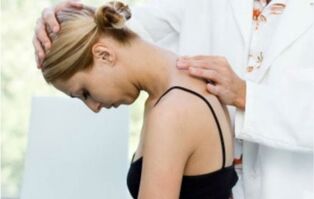
Do you know why the spine suffers? It is not possible to say for sure whether the disease started due to malnutrition or blood stasis, so an effective program is needed to restore blood flow to the damaged discs for effective therapy.
In addition, we will talk briefly about the treatment of osteochondrosis at home. We talked about some of them in more detail: see the articles in the link below, in the description of the methods.
- Diet. Osteochondrosis is often caused by impaired blood flow due to the accumulation of cholesterol and loss of vascular elasticity. Eliminating fatty foods, as well as foods rich in cholesterol, such as chicken eggs, broths, pork and chicken skins, will help improve the situation. Strong drinks can play an important role in the functioning of blood vessels and even non-alcoholics - ordinary coffee and tea. Regular intake of nicotine in the body also causes vasospasm. The decision is unequivocal: if you are being treated for osteochondrosis, you must completely give up bad habits and lead a healthy lifestyle.
- Restoration of blood circulation in the pathological process zone is the most important condition for the treatment of osteochondrosis at home. There are many ways: from physiotherapy exercises to rubs and compresses, but you have to choose a few.
- Orthopedic sleep supplies. The spine is the axis of the human body that is loaded throughout the day, dynamic when moving, and static when sitting. However, like any other part of the body, it needs proper rest, which can only be ensured during sleep, even in the right position. Quality orthopedic mattresses and pillows create ideal conditions for normal blood circulation during sleep and rest.

Osteochondrosis is a disease that affects the spine, or rather the intervertebral discs. As it develops, the soft elements of the discs are damaged and ossified, and the vertebrae begin to touch each other, while squeezing nearby vascular and nerve fibers.
Cervical osteochondrosis is one of the most common types of spinal lesions that can occur in both the elderly and those in their 20s.
Specialists distinguish 4 stages in the process of disease development:
- Stage I. At this stage, there is a displacement of the intervertebral discs, a violation of stability. In this case, a person may feel muscle tension and mild pain in the affected area. Due to mild symptoms, as a rule, this stage is almost not felt.
- Phase II. The destruction of the annulus fibrosus begins, the distance between the vertebrae decreases. Symptoms are aggravated by localized pain at certain points and dizziness or vertigo. Increased fatigue may also be seen at this stage.
- Phase III. The fibrous ring is completely destroyed, a hernia is formed. In this case, the spine is deformed, the pain is very strong. To reduce anxiety, a person is forced to restrict movement. The obvious symptoms are often dizziness and fatigue.
- Stage IV. This stage is characterized by complete immobility of the damaged area of the spine. Periodically, the pain may disappear, but then increase several times and will definitely return.
The earlier cervical osteochondrosis begins, the more severe the possible complications. If a disease occurs at a young age, the following consequences are possible:
- herniated intervertebral disc;
- radiculopathy of cervical roots;
- intervertebral bulge (bulge) in the cervical region;
- vertebral cervical, etc.
Also in the case of advanced osteochondrosis, problems with the spinal arteries, the development of paresis and other accompanying diseases are possible.
The main symptom of osteochondrosis is back pain. There may be a feeling of numbness in the hands and feet. The pain may worsen with movement. Patients may also complain of headaches, dizziness, and pain in the internal organs.
First signs
At the beginning of the disease, cervical osteochondrosis does not appear at all. The disease often feels neglected with headaches and neck pain when moving. When there is a violation of cerebral circulation with cervical osteochondrosis, a person develops the following symptoms:
- regular headaches;
- impaired sensitivity of facial muscles;
- increased fatigue;
- noise at the beginning;
- ringing in the ears;
- high blood pressure;
- loss of coordination;
- frequent dizziness;
- vibrating gait.
If osteochondrosis of the cervical vertebrae becomes chronic, the pain is permanent and head movements become difficult due to tension in the neck muscles. The patient begins to suffer from cervical migraine, and the headache is sometimes accompanied by vomiting, nausea and even loss of consciousness. If cervical osteochondrosis is not treated in time, a person may experience pharyngeal symptoms: difficulty swallowing, dryness in the throat, itching and itching. Over time, this disease can cause a herniated disc.
Because the intervertebral discs in the cervical spine are not very high, injuries to them can lead to the development of this disease. The beginning of the problem can be indicated by:
- squeak, squeak;
- increase in dental problems (you should visit the dentist more often than usual, for example, due to partial tooth decay);
- blurred vision;
- burning sensation between shoulder blades;
- like a sore throat;
- pain in the shoulder, occipital region, along the entire length of the arms;
- weakness of forelegs;
- lack of coordination expressed in uneven gait;
- frequent dizziness, which may result in fainting;
- decreased endurance;
- feeling tired immediately after sleep;
- recurrent headaches in the left side of the chest, radiating to the arm;
- Restriction of neck mobility, wheezing when turning and bending.
Experts distinguish several types of syndromes that are characteristic of cervical osteochondrosis, including:
- Spine. It develops as a result of a compressed nerve. In this case, a person experiences a sharp pain that spreads from the neck to the shoulders, then to the wrists and other fingers (or a hand). Radical syndrome is also characterized by cracking or "spots" on the skin, pale skin and slight swelling.
- Vertebral artery syndrome. The main symptom is a headache in the girdle. Often this pain is persistent, but in some cases it can be periodic. Increased pain occurs after increased activity or after prolonged restlessness. With a simultaneous decrease in immunity, headache may be accompanied by nausea and loss of consciousness. In addition, hearing, vision, and vestibular problems are possible.
- Cervical Migraine Syndrome. In this case, the blood circulation to the brain is disrupted due to changes in the condition of the vertebrae and the discs between them, which can lead to noise or blockage in the ears, tachycardia, noise in the head, and so on.
- Hypertensive. It is characterized by an increase in intracranial pressure. The patient is worried about severe headache attacks, often accompanied by nausea.
Often, as the disease progresses, the patient's body temperature may rise.
How to treat osteochondrosis at home: folk remedies
Chondrosis can be treated at home only after a doctor prescribes medication. They are aimed at relieving back pain, eliminating inflammatory processes and restoring the mobility of cartilage tissue. After examination and diagnosis, the specialist prescribes the following groups of drugs:
- anti-inflammatory.
- Painkillers.
- vasodilators.
- Muscle relaxants.
- Sedatives.
- Multivitamins.
These must be obtained in accordance with the rules. Medications improve the patient's well-being and restore metabolism. Therefore, after a few weeks, the patient feels better, but we must not forget that osteochondrosis is a systemic disease and should only be treated comprehensively. Pills alone will not solve the problem.
The question of how to treat osteochondrosis at home is becoming increasingly worrying. It is important to understand that osteochondrosis is an unusual disease that will disappear after taking the pill. Osteochondrosis is primarily a change in the spine and cartilage. You need to take a number of measures to treat it. The above tablets must be drunk, but they can not be given up.
Below we will look at the treatment options for osteochondrosis at home. However, you should consult your doctor before using this or that prescription to avoid harming yourself.
The first thing to do is to reduce the pain. This can be done with medication. However, it is important to understand that regular use of painkillers can cause problems with the intestines, liver and pancreas. Therefore, an experienced doctor will definitely recommend folk remedies that can be used safely at home.
- Honey and grated potatoes. Take a few potatoes and pass them through a fine grater, then mix in equal proportions with honey. Mix well and place on top of corn gauze, then apply to the sore spot in the form of a compress. Wrap something warm on top and leave it in this position for an hour. This remedy will relieve the pain quickly, but unfortunately not for long.
- Horseradish leaf. Take a layer of horseradish and steam it with boiling water. Turn the leaf inside out and stick it on the diseased area. Bend well and lie down. In the morning you will feel the pain recede.
- Hot glass. Take a plastic bottle and pour hot water into it, put it on the couch or bed and lie on your back. Try to carry it under you for half an hour.
- Parsley. You should eat one parsley root every day for a month.
- Pine buds. Collect pine buds every spring, but only those that are two centimeters long. Wash them well, dry and grind in a meat grinder. Add sugar in a ratio of 1: 2, the number 2 is the kidneys.
- Mix everything well and remove from the refrigerator to infuse for two weeks. You can tell that the mixture is ready with a changed color, it will be brown. The course of treatment will be three weeks. Eat a teaspoon every day.
- bath. Pain in thoracic osteochondrosis can be relieved in the steam room. The course of treatment is ten days. Do three runs that last five minutes. But visit the bath every day.
Massage and therapeutic baths
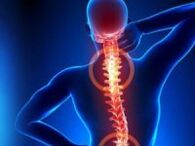
- Start the process by lightly and gently stroking the problem area. It is better not to buy additional devices, the effect of the palms and fingers will suffice.
- They are more affected in the area after rubbing. You can lightly squeeze a layer of skin with your fingers.
- Kneading of muscles and soft tissues should take place in the paravertebral region, it is impossible to affect the chain itself. The movement can be forging, circular, pressing.
- It's worth touching, shaking and stroking to end the session.
Self-massage of the waist can be done every day without special knowledge and skills. Effects on the chest, hips, shoulders, back muscles are generally beneficial in the treatment of osteochondrosis.
In addition to massage, therapeutic baths help to cope with the disease. It is contraindicated in the period of exacerbation, but is indispensable in remission. Proper and regular exercise can increase blood flow, relax muscles, and improve mood and well-being. Only hot water can be used in the process (hot water can only harm), to which herbal decoctions are added. Thyme, rope, thyme, lemon balm, chamomile have proven themselves well. Take a medicated bath 20 minutes before bedtime.
Simple movements are useful for the spine with cartilage dysfunction. The doctor selects them individually for each patient, taking into account the general condition, physical fitness, age. They are performed daily and are an integral part of therapy. The simplest activities are similar to school exercises, but we should not underestimate their importance for the body during treatment. They are aimed at warming up the muscles, improving blood circulation, stretching and relaxing the muscles where they are blocked.
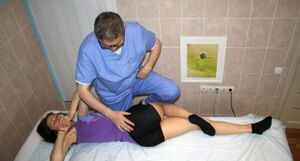
You should follow these tips during execution:
- Do not exercise fast, creating too much stress on the bones and muscles.
- Everything is done smoothly and thoughtfully under the control of the senses in the body.
- If the patient feels pain and cannot correct it, classes are stopped completely.
- Strong complexes are constantly changing with respiration, so the tissues receive enough oxygen.
- Classes should only be held in a well-ventilated room or outdoors.
We must not forget that the attending physician prescribes exercise, some effects of the spine are dangerous in the case of a disease such as osteoporosis. They can cause serious complications. Sports therapy is an excellent tool to combat back pathologies and is often used to prevent a number of problems at increased risks. The complex includes exercises in yoga or oriental techniques. You should do this at least 3 times a week on a regular basis.
Physiotherapy for osteochondrosis is used in addition to the main treatment, the patient's condition significantly improves. Physiotherapy procedures act directly on the painful focus, so there will be no side effects.
- The body's metabolism normalizes.
- The condition of tissues and organs improves.
- Immunity increases and becomes stronger.
- The pain stops.
- Good anti-inflammatory and anti-edema effect.
Specialists often prescribe combination physiotherapy. For example, if the pain is severe, electrophoresis and diadynamic therapy with mandatory novocaine use.
Acupuncture-reflexolaser-piercing is used to act simultaneously on biologically active points. Using laser beams and needles has an effect on the tissue. Mud therapy is used in conjunction with electrotherapy.
Massage
- When there is no pain, the movements do not cause pain.
- In the moment of aggravation.
The specialist prepares the patient before starting this procedure. To do this, first in the area of the shoulder blades, then close to the neck and shoulder girdle, you should hit your back for about 3-5 minutes. After that, stroking should be replaced by kneading and shaking. At this stage, the preparation will be completed, you can proceed directly to the massage procedure.
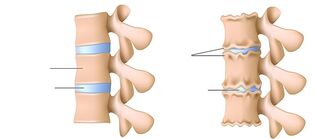
Massage for osteochondrosis can cause severe pain. This can be prevented if the body is properly prepared and relaxed.
If you feel discomfort after the first procedures, you do not need to worry, on the third day the pain will decrease and the procedure itself will be more pleasant.
The patient should be placed on a flat surface in a horizontal position. If the massage is performed only on the neck, the patient should sit.
There is another way to treat osteochondrosis with folk remedies - herbal baths. Baths can be used not only for cleansing, but also for healing, choosing the right herbs and amounts. Baths, like other alternative treatments for osteochondrosis, should be taken only after consulting a doctor. Some forms of osteochondrosis may have contraindications.
To treat osteochondrosis of the spine using a bath, you need to know some recipes for their proper preparation:
- Bath with birch leaves. You need to infuse birch leaves to eat. The bathing procedure should take about half an hour. The water should be a little warm.
- Chestnut bath. Crush chestnuts to cook and boil for 15 minutes. Then pour into the bath and leave for about 20 minutes.
- Pine needle bath. Collect a few needles from the trees in the forest and boil for about 20 minutes. Then pour the water into the bath and leave for about 25 minutes.
- Chamomile bath. Pour boiling water over the chamomile and infuse the broth for half an hour. Then you can filter the medicine and take a bath.
- Jerusalem artichoke bath. Fill a bucket with stalks and leaves of Jerusalem artichoke with a capacity of 10 liters, pour boiling water over it and wait for 20 minutes. Pour the liquid into the bath. The bath procedure takes 15 minutes.
For a more effective treatment of osteochondrosis of the spine, the duration of treatment should be about a week. Baths have a calming and soothing effect, relieve spasms and reduce pain. This home remedy is not only useful, but also pleasant.
How to treat cervical osteochondrosis at home
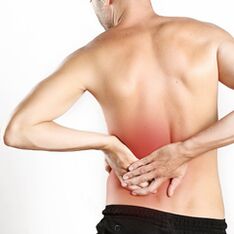
There are several reasons for the onset and development of the disease. Among the most common:
- hereditary tendency;
- posture disorders;
- age;
- past spinal injuries;
- heavy loads, including heavy physical labor and sports;
- previous infectious diseases;
- wear tight-fitting shoes or high-heeled shoes;
- Harmful diet, including excessive dependence on unhealthy foods.
The cause of osteochondrosis can be hypothermia, a sharp bend or twist, strong physical force.
Experts believe that the main cause of osteochondrosis is improper distribution of the load on the spine. As a result, there is a complete or partial change in cartilage tissue where there is excessive physical pressure.
- The spine is curved.
- The patient falls while sitting or walking.
- The back muscles are weak.
- People lead a sedentary lifestyle and move less.
- There is a strong deficiency of calcium, magnesium, phosphorus in the body.
- Hereditary factors.
- Past infectious diseases.
- Severe nervous tension, depression.
- Hormones are disturbed.
- Spinal cord injury, falls, impact can occur.
- Luggage position changes frequently and suddenly.
If weights are lifted at right angles to the body, intervertebral disc prolapse can occur. For this reason, only a large load should be taken when squatting, thus protecting the spine.
Treatment of cervical spine osteochondrosis includes a number of tools and methods aimed at relieving pain and combating the inflammatory process in the tissues. An effective method is daily exercise for spinal elasticity. As a rule, an individual training program is selected by the doctor after diagnosis and assessment of the stage of the disease using MRI or computed tomography. Let's see how cervical lumbar osteochondrosis is treated.
Drug treatment is already prescribed at the first signs of cervical osteochondrosis. If the first pain can be relieved with an ordinary anesthetic pill, then it will no longer help. Medical treatment of cervical osteochondrosis is carried out with a new generation of chondroprotectors - drugs that stimulate the regeneration of spinal cartilage tissue.
However, if acute pain in cervical osteochondrosis needs to be treated, doctors prescribe novocaine blockade or non-steroidal anti-inflammatory drugs. These are ointments, capsules, tablets and injections that rapidly improve the general condition of the patient. However, if there are no contraindications to the long-term use of chondroprotectors, there are serious NSAIDs, so their use should be agreed with the attending physician.
Special gels or ointments that begin to act 10 minutes after application will help to quickly anesthetize the neck and spine with osteochondrosis. There are several types:
- Updates that allow you to repair damaged cartilage tissue between the vertebrae.
- Non-steroidal anti-inflammatory, pain reliever.
- Painkillers that affect the nerve endings quickly dull the pain.
- Massage ointments.
Manual therapy
The oldest, but no less effective method of treatment of osteochondrosis is manual treatment. Specialists have developed many techniques that have a beneficial effect on the vertebrae, tissues and joints of the affected area. Only a chiropractor should be a good specialist in his field so as not to take the patient in a wheelchair. The main methods of manual therapy of cervical spine osteochondrosis are:
- segmental massage that relieves muscle tension;
- manipulations aimed at restoring joint function;
- mobilization, recovery by extending damaged joints.
































